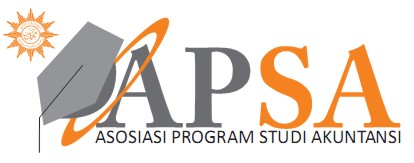The moderating role of risk preference in advance value-added tax refund implementation
DOI:
https://doi.org/10.18196/jai.v26i2.25873Keywords:
Advance Tax Refund, Indonesia, Value Added TaxAbstract
Research aims: This research is motivated by the limited studies on Value Added Tax (VAT) refund in advance. This study aims to examine the influence of the variables of ease of use, efficiency, and risk preference on the intention to implement VAT refund in advance and taxpayer compliance. This study also tests the role of risk preference as moderator.
Design/Methodology/Approach: This research was conducted using a quantitative approach with an associative study design. The data used are primary data obtained from the distribution of questionnaires to respondents consisting of taxpayers in Yogyakarta, Indonesia. The present study also utilized Partial Least Squares Structural Equation Modelling (PLS-SEM) for data analysis. From the distribution of the questionnaire we obtained 102 taxpayers.
Research findings: This study shows that ease of use and efficiency positively influence the intention of corporate taxpayers to carry out VAT refund in advance, while risk preference does not have a significant impact either as independent or moderating variable.
Theoretical contribution/Originality: This study provides insights into the factors influencing taxpayers' interest in VAT refund in advance , such as ease, efficiency, and risk preference.
Practitioner/Policy implication: This study highlights the need for the government and Yogyakarta Tax Office to simplify tax refund procedures, speed up tax refund processes, and ensure transparency to reduce taxpayer concerns.
Research limitation/Implication: This research is limited to the taxpayer population located in the Yogyakarta region. Conditions and demographics in other regions may differ, so this research may not yet be able to depict the situation in those areas.
References
Agustina, C., & Santoso, A. (2022). Tax procedures and risk preference: Implications for tax compliance. Journal of Taxation and Public Policy, 10(1), 25–40.
Amelia, R., & Hurriyati, E. (2022). The role of perceived ease of use and perceived usefulness in OVO mobile payment adoption. Asian Journal of Information Management, 15(2), 110-120. https://e-journal.unair.ac.id/AJIM/article/view/39463
Anjarwi, A. W., & Kharisma, L. (2021). Pengaruh jumlah percepatan restitusi pajak pertambahan nilai terhadap penerimaan pajak pertambahan nilai (Studi pada Kantor Pelayanan Pajak Pratama Malang Utara). Profit: Jurnal Administrasi Bisnis, 15(1), 120–129. https://doi.org/10.21776/ub.profit.2021.015.01.13
Ardin, G. (2023). Improving effectiveness and efficiency of tax objection process: Lesson learned from Japan. Indonesian Treasury Review: Jurnal Perbendaharaan, Keuangan Negara dan Kebijakan Publik, 8(1), 1–15. https://doi.org/10.33105/itrev.v8i1.520
Azjen, I. (1991). The theory of planned behavior. Organizational Behavior and Humnan Decision Processees, 50, 179-211. https://doi.org/10.1016/0749-5978(91)90020-T
Bangun, C. S., Suhara, T., & Husin, H. (2023). The application of the Theory of Planned Behavior and perceived value on online purchase behavior. Technomedia Journal, 8(1 Special Issues), 123–134. https://doi.org/10.33050/tmj.v8i1sp.2074
Blumberg, B., Cooper, D., & Schindler, P. (2014). EBOOK: Business research methods. McGraw Hill.
BPS, Badan Pusat Statistik (2024). Statistik Indonesia dalam infografis 2024. Jakarta: Badan Pusat Statistik (BPS). https://www.bps.go.id/id/publication/2024/09/26/a88a6f32c79e2d992331d9eb/statistik-indonesia-dalam-infografis-2024.html
Chin, W. W., Marcolin, B. L., & Newsted, P. R. (2003). A partial least squares latent variable modeling approach for measuring interaction effects: Results from a Monte Carlo simulation study and an electronic-mail emotion/adoption study. Information systems research, 14(2), 189-217. https://doi.org/10.1287/isre.14.2.189.16018
Damayanti, P. E. (2022). Pengaruh Kebijakan Insentif Pajak, Modernisasi Administrasi Perpajakan, Religiusitas, dan Kesadaran Pajak terhadap Kepatuhan Pajak di Masa Pandemi Covid-19 (Studi Kasus pada Wajib Pajak Orang Pribadi yang Terdaftar di KPP Pratama Boyolali) (Doctoral dissertation, Universitas Islam Indonesia).
Daryatno, A. B. (2021). Pengembalian pendahuluan kelebihan pajak sebagai alternatif membantu cashflow PT Continental Panjipratama pada masa pandemi COVID-19. Prosiding SENAPENMAS, 777–786. http://dx.doi.org/10.24912/psenapenmas.v0i0.15103
Davis, F. D. (1989). Perceived usefulness, perceived ease of use, and user acceptance of information technology. MIS Quarterly, 13(3), 319-340. https://doi.org/10.2307/249008
Dewi, D. S., Dwiatno, E., & Santoso, T. (2024). The effect of perceived ease of use on taxpayer compliance in Indonesia’s online tax system. Jurnal Akuntansi dan Manajemen, 12(1), 45-59.
Fishbein, M., & Ajzen, I. (1975). Belief, attitude, intention, and behavior: An introduction to theory and research. Reading, MA: Addison-Wesley.
Hair, J. F., Risher, J. J., Sarstedt, M., & Ringle, C. M. (2019). When to use and how to report the results of PLS-SEM. European business review, 31(1), 2-24. http://dx.doi.org/10.1108/EBR-11-2018-0203
Henseler, J., Ringle, C. M., & Sarstedt, M. (2015). A new criterion for assessing discriminant validity in variance-based structural equation modeling. Journal of the academy of marketing science, 43, 115-135. https://doi.org/10.1007/s11747-014-0403-8
Hidayanto, D., Aprilia, S., & Nababan, N. (2023). The role of e-filing, perceived ease of use, and perceived usefulness in improving corporate taxpayer compliance. Jurnal Akuntansi dan Manajemen, 20(1), 58–66. https://doi.org/10.36406/jam.v20i01.872
Idrus, M. (2024). Efficiency Of Tax Administration and Its Influence On Taxpayer Compliance. Economics and Digital Business Review, 5(2), 889–913.
Inasius, F. (2019). Factors influencing SME tax compliance: Evidence from Indonesia. International Journal of Public Administration, 42(5), 367-379. https://doi.org/10.1080/01900692.2018.1464578
Indrawan, R. (2022). Efficiency Tax Reporting System As Variable Moderation For Digitalization Of Tax Compliance. Jurnal Rekayasa Sistem Industri, 13(2), 65–74. https://doi.org/10.26593/jrsi.v13i2.7181.65-74
Ismail, A. R., Zain, N. M., & Ahmad, H. (2021). The impact of trust and ease of use on tax compliance: Evidence from Malaysia’s e-filing system. EAI Endorsed Transactions on Energy Web, 8(1), 1–10. https://eudl.eu/doi/10.4108/eai.1-10-2020.2305611
Kardiyati, E. N., & Karim, A. (2020). Analisis Restitusi Pajak Pertambahan Nilai Pada Kepatuhan Pengusaha Kena Pajak Kantor Pelayanan Pajak Pratama (Kpp Cirebon Tahun 2016–2018).Balance: Economic, Business, Management And Accounting Journal, 17(2), 87-94. https://doi.org/10.30651/blc.v17i2.5271
Kasim, K., & Hendri, R. (2018). Pengaruh Kemudahan Administrasi terhadap Implementasi Restitusi Pajak di Indonesia. Jurnal Ekonomi dan Keuangan Pajak, 14(2), 112-130. https://doi.org/10.5678/jekp.v14i2.99872
Kontan.co.id. (2023, Januari 16). Naik 42,9%, restitusi pajak hingga Desember 2022 tembus Rp 28,041 triliun. Kontan.co.id. https://nasional.kontan.co.id/news/naik-429-restitusi-pajak-hingga-desember-2022-tembus-rp-28041-triliun
Lewis, B. R., Templeton, G. F., & Byrd, T. A. (2005). A methodology for construct development in MIS research. European Journal of Information Systems, 14, 388-400. https://doi.org/10.1057/palgrave.ejis.3000552
MacKenzie, S. B., & Podsakoff, P. M. (2012). Common method bias in marketing: Causes, mechanisms, and procedural remedies. Journal of retailing, 88(4), 542-555.
Mahfuza, D. U. (2021). Penerapan Pengembalian Pendahuluan Kelebihan Pembayaran Pajak Pertambahan Nilai Dan Kaitannya Dengan Kepatuhan Dan Penerimaan Pajak KPP Pratama Bangkinang. Educoretax, 1(1), 46-58. https://doi.org/10.54957/educoretax.v1i1.6
Manganya, A. K. (2022). An overview of the moderating effect of a simplified tax administration system on compliance and taxpayers’ perceptions.
Mareti, E. D., & Dwimulyani, S. (2019). Pengaruh pemahaman peraturan perpajakan, kualitas pelayanan fiskus, sanksi pajak, dan tax amnesty terhadap kepatuhan wajib pajak dengan preferensi risiko sebagai variabel moderasi. Prosiding Seminar Nasional Pakar, 2, 1–12. https://doi.org/10.25105/pakar.v0i0.4334
Melamaulidah, M., Cinintya Pratama, B. ., Fitriati, A., & Pandansari, T. (2023). Electronic Tax Filing System Usage: The Role of Perceived Ease, Usefulness, Trust With Attitude As a Mediator. Jurnal Proaksi, 10(4), 555–569.
Memon, M. A., Ting, H., Cheah, J.-H., Thurasamy, R., Chuah, F., & Cham, T. H. (2020). Sample size for survey research: review and recommendations. Journal of Applied Structural Equation Modeling, 4(2), 1-20. https://doi.org/10.47263/JASEM.4(2)01
Murtiningtyas, T., Pratiwi, D. V., & Sa’adah, L. (2024). Preferensi risiko memoderasi pengampunan pajak, pemahaman perpajakan dan kualitas pelayanan fiskus terhadap kepatuhan wajib pajak. Journal of Applied Business and Banking, 5(2), 123–135. https://doi.org/10.33105/jabb.v5i2.27303
Ningsih, S. (2020). Efisiensi dan Kemudahan dalam Pengembalian Pendahuluan Pajak: Pengaruhnya terhadap Kepatuhan Wajib Pajak. Jurnal Administrasi Pajak, 7(4), 99-115.
Nurwati, E., & Umaimah, U. (2025). Understanding regulations, tax sanctions and taxpayer compliance: the role of risk preference moderation. Jurnal Akademi Akuntansi, 8(1), 32-48. https://doi.org/10.22219/jaa.v8i1.38365
Pajak.com. (2023, Maret 31). Sri Mulyani: Terima kasih, 12,01 juta wajib pajak telah lapor SPT. Pajak.com. https://www.pajak.com/pajak/sri-mulyani-terima-kasih-1201-juta-wajib-pajak-telah-lapor-spt
Parasuraman, A., Zeithaml, V. A., & Malhotra, A. (2005). ES-QUAL: A multiple-item scale for assessing electronic service quality. Journal of service research, 7(3), 213-233. http://dx.doi.org/10.1177/1094670504271156
Pavlou, P. A. (2003). Consumer Acceptance of Electronic Commerce: Integrating Trust and Risk with the Technology Acceptance Model. International Journal of Electronic Commerce, 7(3), 101–134. https://doi.org/10.1080/10864415.2003.11044275
Purnomo, Adimas Annas. 2023. Evaluasi Manajemen Restitusi Pajak PPN PTPPP Presisi Tbk. Journal Of Economics And Business. 12(5), 3028-3045. https://doi.org/10.52644/joeb.v12i5.590
Revilla, M. A., Saris, W. E., & Krosnick, J. A. (2014). Choosing the number of categories in agree–disagree scales. Sociological methods & research, 43(1), 73-97. https://doi.org/10.1177/0049124113509605
Sadjiarto, A., Marcellino, A., Suwargo, A. B., & Suntoro, D. (2020). Pengaruh tax attitude terhadap tax compliance dengan financial condition dan risk preference sebagai variabel moderasi. Profita: Komunikasi Ilmiah Akuntansi dan Perpajakan, 13(3), 1–12.
Saragih, T. R., & Aswar, K. (2019). The influencing factors of taxpayer compliance: Risk preferences as a moderating variable. International Journal of Academic Research in Accounting, Finance and Management Sciences, 9(4), 269–278. https://doi.org/10.6007/IJARAFMS/v9-i4/6845
Sari, P. I., Pradnyani, N. L. P. N. D. A., & Suprapto, P. A. (2022). The effect of tax incentives, taxpayer awareness, tax sanctions, and implementation of e-filing on MSME taxpayer compliance. Journal of Applied Sciences in Accounting, Finance, and Tax, 5(1), 11–19. https://doi.org/10.31940/jasafint.v5i1.11-19
Sari, R., & Fitria, N. (2019). Efisiensi dalam Proses Restitusi Pajak: Analisis Faktor-faktor yang Mempengaruhi Keikutsertaan Wajib Pajak. Jurnal Akuntansi dan Pajak, 6(3), 56-71. https://doi.org/10.31093/jraba.v3i1.94
Sofyani, H., & Darma, E. S. (2024). Effect of architecture and efficiency of mobile banking application on the intention to continue using Islamic bank: does data security matter? Journal of Islamic Marketing, 15(6), 1479-1497. https://doi.org/10.1108/JIMA-07-2023-0220
Sulistiyanti, U., & Damayanti, P. E. (2022). Individual taxpayer’s compliance during Covid-19 pandemic. Jurnal Akuntansi dan Auditing Indonesia, 27(1), 1–15. https://doi.org/10.20885/jaai.vol27.iss1.art5
Susanto, A., Chang, Y., & Ha, Y. (2016). Determinants of continuance intention to use the smartphone banking services: An extension to the expectation-confirmation model. Industrial Management & Data Systems, 116(3), 508-525. https://doi.org/10.1108/IMDS-05-2015-0195
Tananko, J. P. (2023). The moderating role of perceived ease of use of e-tax systems on tax fairness and compliance among SMEs in Nigeria. African Journal of Accounting, Auditing and Finance, 11(1), 55–72. https://doi.org/10.1504/AJAAF.2023.128046
Yuesti, A., & Sudiartana, I. K. (2021). Understanding taxation rules, fiscal service quality, and tax sanctions on personal tax compliance with risk preferences as a moderation variable. Journal of International Conference Proceedings, 4(1), 352–360.
Zaskia, E. N., & Muna, A. (2024). Connection between Behavioral Intention, perceived Usefulness, and perceived Ease of Use for Indonesian GoPay E-Wallet Users. Asian Journal of Management, Entrepreneurship and Social Science, 4(03), 1422-1443.
Downloads
Published
How to Cite
Issue
Section
License
Copyright (c) 2025 Dwi Siharini, Hafiez Sofyani

This work is licensed under a Creative Commons Attribution-NonCommercial-NoDerivatives 4.0 International License.
License
 Journal of Accounting and Investment is licensed under Creative Commons Attribution Attribution-NonCommercial-NoDerivatives 4.0 International License.
Journal of Accounting and Investment is licensed under Creative Commons Attribution Attribution-NonCommercial-NoDerivatives 4.0 International License.




